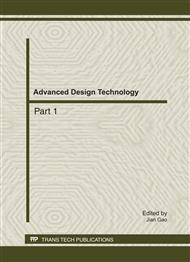p.1264
p.1269
p.1273
p.1277
p.1283
p.1288
p.1292
p.1297
p.1302
Effects on Fatigue Life of Bolt by Scatter of Pre-Tension Stress
Abstract:
This paper adopts contacting finite element method to perform exact stress and strain analysis on bolt joint structure, and the curve of pre-tension stress-life σp-N was drawn. According to the curve, production practice can be well guided and the optimum pre-tension stress may be obtained .By the means of curve between load and deformation, the curve shape of σp-N was analyzed in detail, the results showed that the analysis by finite element was coincident with mechanics analysis.
Info:
Periodical:
Pages:
1283-1287
Citation:
Online since:
August 2011
Authors:
Keywords:
Price:
Сopyright:
© 2011 Trans Tech Publications Ltd. All Rights Reserved
Share:
Citation:


